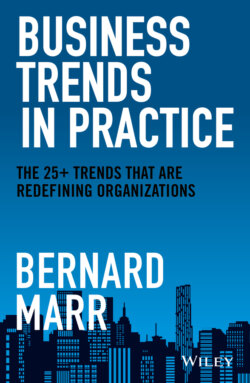Читать книгу Business Trends in Practice - Бернард Марр, Bernard Marr - Страница 35
CHAPTER 3 HOW WE GENERATE ENERGY: The Three Trends Transforming the Energy Sector
ОглавлениеOur traditional ways of generating energy are exploitative, unsustainable, and designed for the world of the past (making the name “fossil fuels” particularly apt). Then there's the problem that energy producers who are reliant on fossil fuels aren't held accountable for the true external costs, particularly the cost to the environment and people's health. Coal, for example, is only considered cheap because coal-fueled power stations don't have to pay for the environmental and social costs associated with burning coal. In some parts of the world, this will no doubt have contributed to the reliance on fossil fuels continuing far longer than it should have.
Now that we understand the impact of fossil fuels, it's time to start approaching energy production differently. And it couldn't be more urgent because some of the emerging alternatives being mooted have a long lead time, meaning we need to start investing in these technologies now if we're to reap the benefits by, say, 2050.
It's no exaggeration to say that I consider transforming the energy sector to be one of the most important challenges we face in the world. But there are exciting and encouraging signs of change. In particular, three key trends are promising to overhaul how we produce energy:
Decarbonization refers to the transition toward a clean, carbon-free world, largely by increasing the use of renewables. Increasing premiums on the use of fossil fuels would also fall under this.
Decentralization refers to distributed energy production, instead of the highly centralized grids that we're currently used to.
Digitization refers to the use of digital machines, devices, and technology to optimize energy production, infrastructure, and use. Think of it as “intelligent energy.”
Let's explore each trend in turn.
